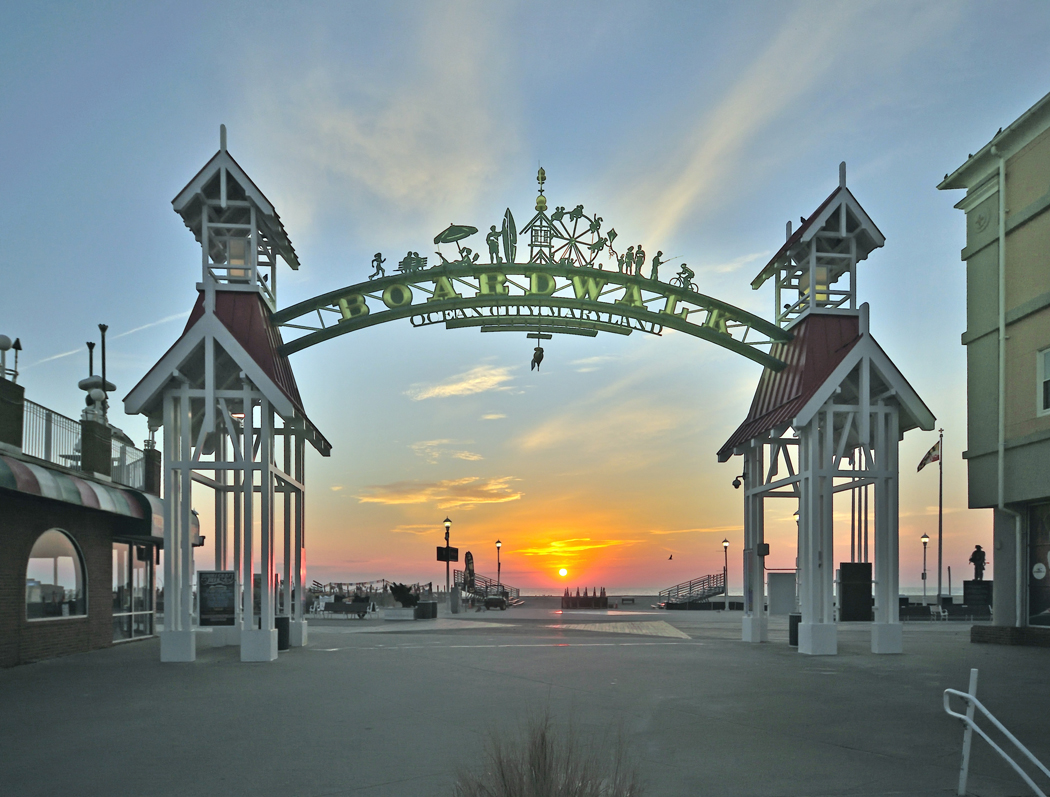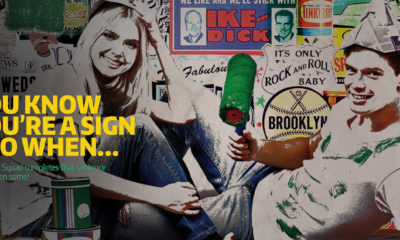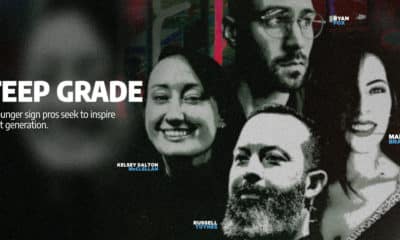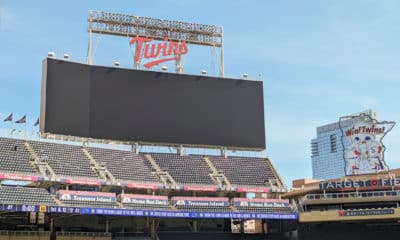Best Practices
Building Safer Signs
How to engineer structures that counter natural forces, costly failures and deadly accidents.
Published
7 years agoon

HAN SMIT AND THRAS MORAITIS identify two prime CEO types, the “designer” and the “opportunist,” and how their different views affect company actions, in their book Behavioral Option Games. The book caught my eye because I have often said that CEO attitudes affect a company’s products because CEOs are the ones who decide on R&D budgets, materials types and engineering investments and, by these actions, they decide the quality of the firm’s products. In the sign industry, I’ve always found that firms staffed with executives who enjoy interesting cars and have something unique in the garage (that requires hands-on wrenching) tend to build stronger machine products.
In introducing the book, Princeton University Press said a large proportion of business acquisition strategies fail to deliver the expected value because managers rely on flawed valuation models or their intuition and experience when making risky investment decisions, and that such actions expose their companies to potentially costly pitfalls.
Smit, professor of corporate finance at Erasmus University Rotterdam, and Moraitis, a co-founder of X2 Resources, a privately funded mining and metals investment firm, said CEO standpoints affect their company investments and its products. The authors said “designer”-type executives clearly see their firm’s competitive positioning; they conceive how-to methods for success and have a strong intention to design and execute their conceived strategies. As the name suggests, these “opportunists” are less inclined to be committed to a master plan and are more inclined to take advantage of emerging opportunities or conditions. Both methods have advantages and both can cause problems. The writers said, “In the real and uncertain competitive world, macroeconomic change, evolving customer needs, or competitor preemption may render apparently realistic [designer-conceived] targets unavailable or unattractively expensive.” They’re saying to dream big often costs big. At the same time, an unmixed opportunist approach cannot provide an organization with the strategic and organizational direction it requires to function successfully, or even to survive in the long term.
Choose either, or both, but choose carefully.
Why It Matters
In March (see ST, March 2017, page 22) I wrote of a January 23 storm with 60 mph winds ravaging the mid-Atlantic coast and causing major damage and injury in several cities. One tragic result was the death of a 60-year-old man who Philadelphia’s Channel 10 (NBC) said was killed by a falling sign, which wasn’t exactly true. My later conversation with the City of Philadelphia’s director of communication for licensing and inspections revealed that a heart attack had killed him – not the falling sign. I wrote that I had enlarged and examined the news photos to see excessive mildew and mold on the sign back and came to believe installation component fatigue aggravated by the strong winds led to the fall.
I asked then and I’ll ask again: Who is responsible for the sign failure – the sign owner or the sign builder?
AdvertisementStatics and Moments
“Statics” defines a branch of mechanics concerned with the analysis of loads as they act on physical systems that do not experience acceleration but are in static equilibrium with their environment. Think signs, vertically installed ones mostly, but if the signs you imagine are in a state of static equilibrium – motionless, that is – your imagined vista conveys a balmy spring day with no wind or angry butterflies about.
What affects equilibrium are force, torsion or “moments,” the latter being a rotating effect of a force, in a physics interpretation. Forces that affect signage may originate through impact by other objects (think careless cars or angry birds), natural forces (wind, gravity, or additional weight caused by rain, ice or snow) and causal heat or cold expansion or contraction from temperature variations.
H. W. Morrow, in his book Statics and Strength of Materials, defined “statics” as the branch of mechanics which involves the study of forces and their effects acting on bodies in equilibrium. To describe force, he said, you need to specify the force magnitude, direction and point of application. He said the examination of statics can answer questions concerning the loads that bodies in equilibrium support. Morrow expands my above definition of force by saying force is the action of one body against the other, that “tends to change the shape or state of motion, including the static equilibrium.”
Think billiards.
What’s the Frequency?
Benjamin Jones, PE, vice president of YESCO (Salt Lake City), structural engineer and author of Engineering Sign Structures: An Introduction to Analysis and Design, said wind gust factors can either be simple or maddeningly complex. He said a sign structure’s sensitivity to short-term gusting depends upon the sign stiffness and mass, as indicated by its natural frequency. Mass, he said, is the material property acted on by gravity to produce a weight force. Stiffness is the function of the structural material and its cross-section shape. Jones notes that all structures possess a natural frequency at which they vibrate when set in motion by force. Think in terms of harmonics – it’s why you sound better singing in the shower. This natural frequency is the number of complete back and forth repetitions (in cycles per second) the moving sign makes per second, and Jones notes that a structure may have many natural frequencies that correspond to different modes, each mode representing an overall shape that the sign structure may take while vibrating. Obviously, a sign structure enduring wind battering takes different shapes than when at static equilibrium; those new shapes may further affect any forces railing against the sign.
I’ll also note the additional problems of gravity and entropy (leading to component deterioration), both of which are constant with the latter, deterioration, as increasingly relentless. Remember, metal breaks down over time and extended use – and metal particles weaken when bent or twisted (such as during wind loads). Once weakened, metal deteriorates at a faster rate. Thus, metal fatigue and cracks can eventually cause the metal to fail, even when a small force is applied.
AdvertisementPractical Engineering Advice
For some real-world advice, I telephoned Sean McFarland, PE, structural engineer and owner of McFarland Engineering, Advance, NC, and asked him about sign engineering. McFarland has designed thousands of signs and his firm contracts with many nationwide franchises to engineer their signs. I asked, “What basic but important things should sign builders know?”
McFarland put support pipes first. He said, “Go with a higher-yield steel pipe when you can,” and added, “On a strength per dollar basis, you get the best bang for the buck going with, say, 42-ksi steel pipe versus 35-ksi steel pipe.” (A metal’s yield strength and ultimate tensile strength values are commonly expressed in pounds per square inch (psi), or thousands of pounds per square inch (ksi), thus 42 ksi is equal to 42,000 psi. His advice philosophically relates to the above designer and opportunist’s narrative; the former would specify the higher strength steel whereas the opportunist might prioritize price over strength.
McFarland also said you should consider wide-flange beams, sometimes called I-beams, for multiple-support signs, especially when you’re installing pole covers. The distribution of greater strength – to both flanges in the wind load direction – positively affects their strength on a pound for pound basis, compared to round pipe which distributes material in the non-wind load direction as well. Again, note that McFarland said “for multiple support signs.” However, he also said single-support signs are always more economical than dual support, considering support and foundation requirements. “It’s a much more economical solution,” he said.
Jones wrote that wide-flange beams as sign columns should not be used as a single support unless a torsional analysis is performed. He said wide-flange beams, when used in structures comprising two or more columns, provide each other a degree of redundancy, depending upon the stiffness of the sign cabinet frame.
McFarland added that any vertical-sign support should pass through the sign cabinet, attaching to both the top and bottom and thereby adding stiffness and support to the cabinet structure. However, he advised that signmakers always use Neoprene (synthetic rubber) to separate steel from any aluminum and said the Neoprene will discourage galvanic corrosion and allow steel sign supports within an aluminum sign cabinet.
Galvanic corrosion occurs when two dissimilar metals are in contact with one another, often in an outdoor environment. With continued exposure to an electrolyte (such as water), one of the metals experiences a preferentially accelerated corrosion rate through a process called electrolysis. In this situation, the more chemically “noble” (i.e., corrosion-resistant) of the metals becomes the cathode and is protected against corrosion, while the less noble becomes the anode and corrodes. As McFarland referenced, aluminum, when subjected to steel, presents a risk of galvanic corrosion. The Neoprene insulation forestalls most corrosive action.
AdvertisementMcFarland also cautioned that vortex shedding – aerodynamic effects – are a significant problem for signs in the mid-height range, where sign pipe failure occurs because of constant buffeting conditions. He said his firm provides a simple and inexpensive solution for this problem.
While this article touches only on a small element of an elaborate design and engineering challenge, hopefully, by discussing these key factors, sign builders will work to educate themselves, ensuring their sign structure designs are well engineered.
SPONSORED VIDEO
Introducing the Sign Industry Podcast
The Sign Industry Podcast is a platform for every sign person out there — from the old-timers who bent neon and hand-lettered boats to those venturing into new technologies — we want to get their stories out for everyone to hear. Come join us and listen to stories, learn tricks or techniques, and get insights of what’s to come. We are the world’s second oldest profession. The folks who started the world’s oldest profession needed a sign.
You may like
Advertisement

NUtec Digital Ink Invests in Solar Energy for Facility

5 Reasons to Sell a Sign Company Plus 6 Options

21 Larry Albright Plasma Globes, Crackle Tubes and More
Subscribe

Bulletins
Get the most important news and business ideas from Signs of the Times magazine's news bulletin.
Advertisement
Most Popular
-

 Tip Sheet1 week ago
Tip Sheet1 week agoAlways Brand Yourself and Wear Fewer Hats — Two of April’s Sign Tips
-

 Photo Gallery3 days ago
Photo Gallery3 days ago30 Snapshots of the 2024 ISA Sign Expo
-

 Ask Signs of the Times5 days ago
Ask Signs of the Times5 days agoWhy Are Signs from Canva so Overloaded and Similar?
-

 Real Deal2 weeks ago
Real Deal2 weeks agoA Woman Sign Company Owner Confronts a Sexist Wholesaler
-

 Benchmarks1 week ago
Benchmarks1 week ago6 Sports Venue Signs Deserving a Standing Ovation
-

 Paula Fargo11 hours ago
Paula Fargo11 hours ago5 Reasons to Sell a Sign Company Plus 6 Options
-

 Photo Gallery11 hours ago
Photo Gallery11 hours ago21 Larry Albright Plasma Globes, Crackle Tubes and More
-

 Women in Signs2 weeks ago
Women in Signs2 weeks ago2024 Women in Signs: Megan Bradley











